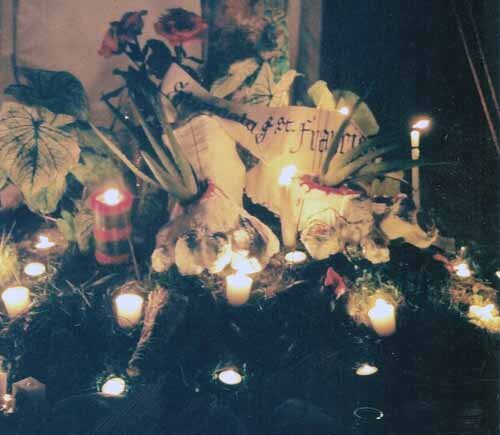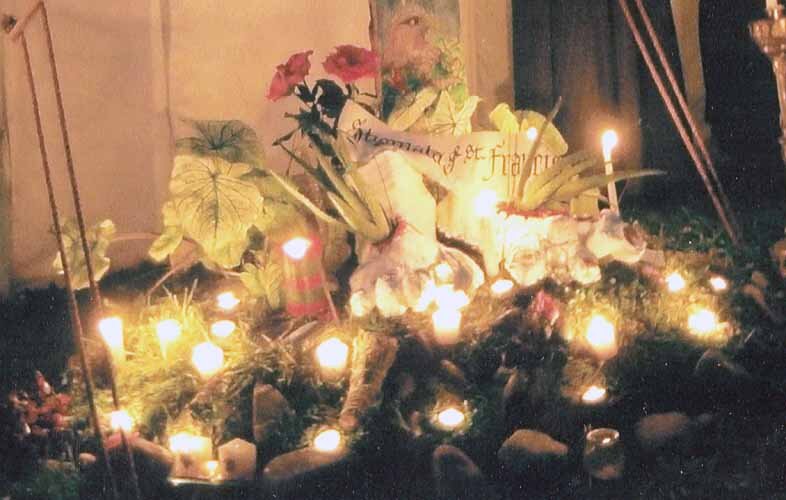I have to skip my etching studio time again today. It’s frustrating but I’m trying to breathe with it. It’s a continual process understanding who is in charge. It’s not me. Most people have the illusion that they control their own lives. I don’t have that luxury. But luxury can be deadening, connection is of much greater importance.
Sadness: Is It Necessary To The Spiritual Path?
On The Wild Things of God (I love that name!) today there is a about sadness. He describes the feeling of needing to fight sadness, to snap out of it. I know I've felt like that, but, it is interesting to ponder whether sadness is a necessary part of the spiritual path.
On the mundane level, sadness is definitely something to be avoided, but it seems very likely that the spiritual journey requires us to go deeper into sadness, to embrace it and not to resist. Every experience we are given has meaning. It is up to us to find it. By feeling every second of sadness with intensity, we cleanse it.
The judgment that sadness is wrong just because it doesn’t feel good is prevalent in our society. We are taught that we must understand the causes of sadness, and rid ourselves of it like a disease. Understanding sadness actually gets in the way of releasing it. It is more important to feel it than to understand it. Reason is irrelevant. We must trust that if God brings us sadness it is for a Divine purpose. Maybe we are processing something in our own past which is blocking our closeness to God or maybe we are bearing the burdens of a cultural sadness. By delving into our own feelings, we are helping humanity to discharge it. We are all intimately connected.
Our bodies are like river beds. We are the channel through which the Divine flows into the material world. It is our duty not to block the river. Denying our sadness, running from it, leaves the sadness to settle and damn river. So, in the conclusion (from someone who know nothing at all!), as uncomfortable as it is, sadness is necessary to the spiritual path.
What St. Francis Tells the Artist
There is a 14th century manuscript included in Francis and Clare: The Complete Works (The Classics of Western Spirituality), which describe what St. Francis considers “perfect joy”. I can’t tell you how much this story has helped me. I’ve paraphrased it here:
Brother Leo asks St. Francis, “What is perfect joy?” St. Francis replies listing the things that would logically bring him great happiness: If all the masters in Paris join my order, it would not be perfect joy. Or if all the masters in Europe, and the King of France joined the order, that would not be perfect joy. And if all the non-believers in the world were converted and I had the grace from God to heal all sickness, that would not be true joy.
(Okay, so what would it be? Get ready!)
“I return from Perugia and arrive here in the dead of the night and it is winter time, muddy and so cold that icicles have formed on the edges of my habit and keep striking my legs, and blood flows from the wounds. And all covered with mud and cold, I come to the gate and after I have knocked and called for some time, a brother comes and asks: “Who are you?” I answer: “Brother Francis.” And he says: “Go away; this is not a proper hour for going about; you may not come in.” And when I insist, he answers: “Go away, you are a simple and a stupid person; we are so many and we have no need of you. You are certainly not coming to us at this hour!” And I stand again at the door and say: “For the love of God, take me in tonight!” And he answers: “I will not. Go to the Croisers’ place and ask there.” I tell you this: If I had patience and did not become upset, there would be true joy in this…” (p.165-6)
It is this passage that inspired me to make an altar of St Francis’ feet. How can seeming misery be joy? Illness and wounds, whether physical or metaphorical, can bring enormous suffering. Our experiences of pain are mirrored for us by St. Francis' stigmata. On my altar I planted the aloe vera plants in his stigmata to show that our wounds can bring healing to our lives. But this, St. Francis counsels us, is only possible through acceptance not struggle. It is struggle that produces suffering, and acceptance which produces joy. There are, in fact, things that happen in each life that can not be changed and which seem completely unacceptable, things like severe illness, disfiguration or scars, & the death of a loved one to name a few. St. Francis shows us that there can be happiness, even joy in the face of these terrible events and from that healing. Pain & joy are not mutually exclusive emotions and healing depends on the coexistence of the two.
I mention this only because it is so easy to be thrown by the events of life and to forgo making art. But art is life blood to an artist and we must learn not to be crippled in the face of great obstacles rather we must create.

Privacy and the Artist
Privacy has always been a big concern for me. I’ve spent my whole life trying to keep private. I’m sitting in a café (Café Meow in Maplewood) and I just told a friend of mine that my mother was a comedian when I was growing up. I spent my childhood sitting in smoky nightclubs hearing my mom joke about me and her crotchless underpants. My friend was amazed. She had no idea.
This blog is a challenge for me, because I’m not used to sharing my life or my thoughts in such a direct way. When I posted my last entry, a picture of a sculpture in progress, I had a moment of vertigo. I think, in fact, it takes a lot of energy to hide my life from view. Right now, I’d rather spend that energy living. I also think that when your goal is to surrender into the creative flow of the Divine, you by definition must give up such rigid control of your life.
Re-entry
Grace by Sybil Archibald
Making art is an act of spiritual surrender. It is stepping out of the way to observe while the natural creative process flows through. For the past 10 years I have tried to control the outcome of my art. No more. I am embarking on a great adventure with no known outcome. The journey back inside, tracing the roots of my creativity to their source, the fundamentally generative nature of the Divine.




